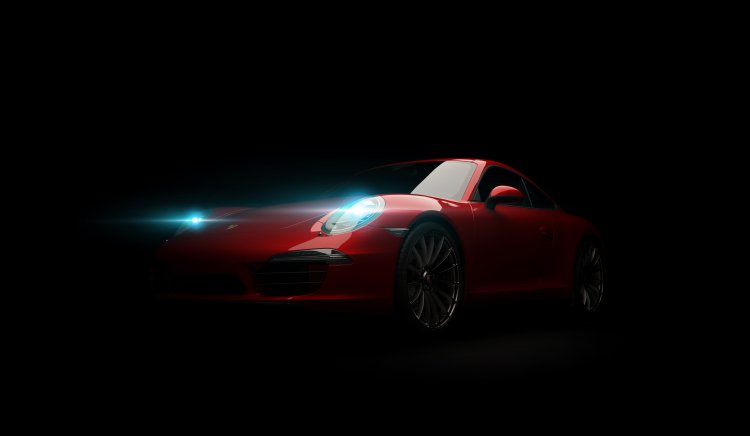Porsche's new generation LEDs turn night into day
The high-efficiency high beam works at a distance of up to 600 meters...

The high-efficiency high beam can illuminate a distance of up to 600 meters, and because the headlights only activate the necessary pixels, they use substantially less energy to produce the same amount of light.
Porsche has created next-generation lighting technology, which is based on a chip that combines more than 16,000 micro LEDs that can be individually controlled on a fingernail-sized surface. Porsche states that headlights with HD matrix technology (HD matrix technology) ensure high-resolution light dispersion, twice as bright on four times the area of prior systems.
Porsche also boasts cutting-edge features including lane illumination, driving lights for roadworks and narrow lanes, and adaptive high beams on the highway. The new anti-dazzle high beam feature is utilized for oncoming vehicles, with wide areas to the right and left of the anti-dazzle light becoming much brighter. The high-efficiency high beam is supposed to turn darkness into the day from up to 600 meters away.
The new technology also offers something else: because the headlights only activate the pixels that are truly needed at any given time, they waste substantially less energy than other high-resolution systems while maintaining the same quantity of light.
The new Porsche headlights comprise two new HD matrix modules and two dual-function modules for cabin lighting and auxiliary high beams, in addition to four-point daytime running lights and static cornering lights.
The heart of the new HD matrix technology is the two lower-light units. Each has an identical LED array with an integrated ASIC driver that generates a high-resolution light flux in an area of 12.8 by 3.2 millimeters.
The system controller, comparable to a powerful graphics card, activates and controls the brightness of each of the 16,384 individual LEDs per LED array in 1024 steps. Different lenses, each with specially ground optical glass, complete the two HD modules.
Different lighting angles are produced by the lenses. The external module's wide-angle lens spans an angle of 40 degrees in width and ten degrees in height. The light emitted by the two modules overlaps in the center. The HD matrix modules generate high-resolution direct light while creating only the light that is required, with a total of 32,768 independently controlled pixels per front light.
If the system does not identify vehicles in front or oncoming vehicles while driving, the HD matrix modules switch from dipped to high beams, and the upper dual-function modules' auxiliary high beams are activated. This boosts beam length and increases long beam efficiency to over 600 meters. If the camera detects a vehicle ahead or approaching, the auxiliary highlights are muted, and the vehicle is selectively hidden by turning off the matching pixels.
This function uses a light carpet to help illuminate the vehicle's own lane. Regardless of where the car is in the traffic lane, the strip between the road markers gets noticeably brighter. Whether the vehicle is oriented to the right, left, or center, the brilliant carpet adheres to the road markers like a magnet.
The capability is only engaged on highways and allows for the early detection of dangerous objects. When a lane change is made on purpose, the light carpet briefly spreads to cover both lanes before illuminating only the new lane more strongly.
Post by Bryan C.





























